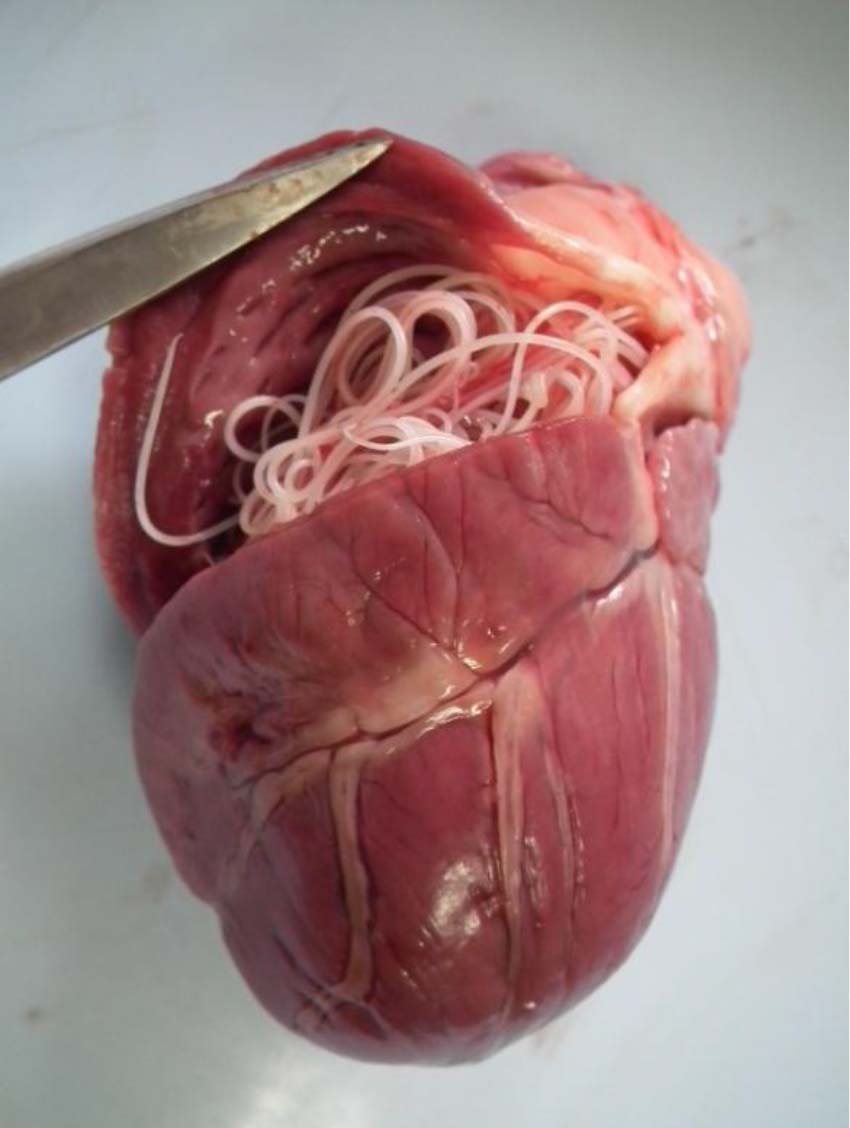Heart Worms in Dogs
29/06/2020 Views : 921
I GUSTI MADE KRISNA ERAWAN
Dogs
are one of the pets that have a very close relationship with humans. Keeping
dogs is one of the hobbies that many people do, in addition keeping other
animals such as cats, birds, and other animals. By some people, keeping a dog is
not only a hobby but has become a pride and is also considered capable of
improving social status for its owner.
In
its care, as with other animals, dogs are also not free from disease. One
disease that can cause problems in dogs is a disease caused by heart worms.
Heart
worm disease in dogs is caused by Dirofilaria
immitis (D. immitis). The worm is
called a heart worm because it lives in the heart, namely the right ventricle
and pulmonary artery. In addition to dogs, D.
immitis worms can also infect cats, wolves, foxes, coyotes, ferrets, water
rats, sea lions, coatimundi, and orangutans.
D. immitis is a nematode that is long, slim
body shape, and white color. If observed in passing, the heart worm has a shape
like vermicelli.

D. immitis in the right ventricle and
pulmonary artery
Since
1847 the existence of heart worms that live in dogs has been reported in
America. Its presence in Indonesia was reported by Iskandar et al in 1998. Endemic infections of D. immitis worm occurred in the USA,
Canada, South America, Africa, Australia, Asia, and southern Europe. Currently
heart worms are reported to have been distributed in various countries.
D. immitis worm can be transmitted from one
dog to another or to other animals by more than 60 species of mosquitoes, but
among these 60 species, important mosquitoes that can act as intermediate host less
than 12 species. Adult female worms after mating will produce microfilariae
which are released into the circulatory system. The microfilariae can be
absorbed by mosquitoes when they bite dogs that suffer from heart worm disease.
Microfilariae will develop in the body of mosquitoes into larvae. When
mosquitoes that contain larvae suck the blood of dogs or other susceptible
animals, the larvae will move to the animal. The larvae in the dog's body will
develop and migrate into the body's tissues to the pulmonary arteries and
develop into adult worms.
Clinical
signs caused by heart worms from mild to fatal symptoms. Mild clinical signs
can be fatigue when animals are given exercise, while the fatal consequences
that can be caused is congestive heart failure. Most cases of infection by
heart worms do not show clear clinical signs. Circulatory disorders that are
chronic and ultimately fatal can occur if the dog is infected by large heart
worms in large numbers.
To
determine whether a dog is infected with heart worms can be examined by various
methods, including examining blood samples, blood sample concentration
techniques, and Knott's test to check for the presence of microfilaria in the
circulatory system. But infection can occur without the presence of
microfilaria in the blood. This condition is very difficult to diagnose by
microscopic blood examination. To overcome these difficulties diagnostic
methods have been developed by detecting antibodies.
Treatment
of dogs infected with heart worms is very difficult and requires large costs.
Therefore, what needs to get priority is prevention. Puppies should be given
preventative medicine as early as possible. Some drugs can cut the life cycle
of worm larvae after infection, so they can be used to prevent heartworm
disease.
